An Expat's Guide to Guatemala
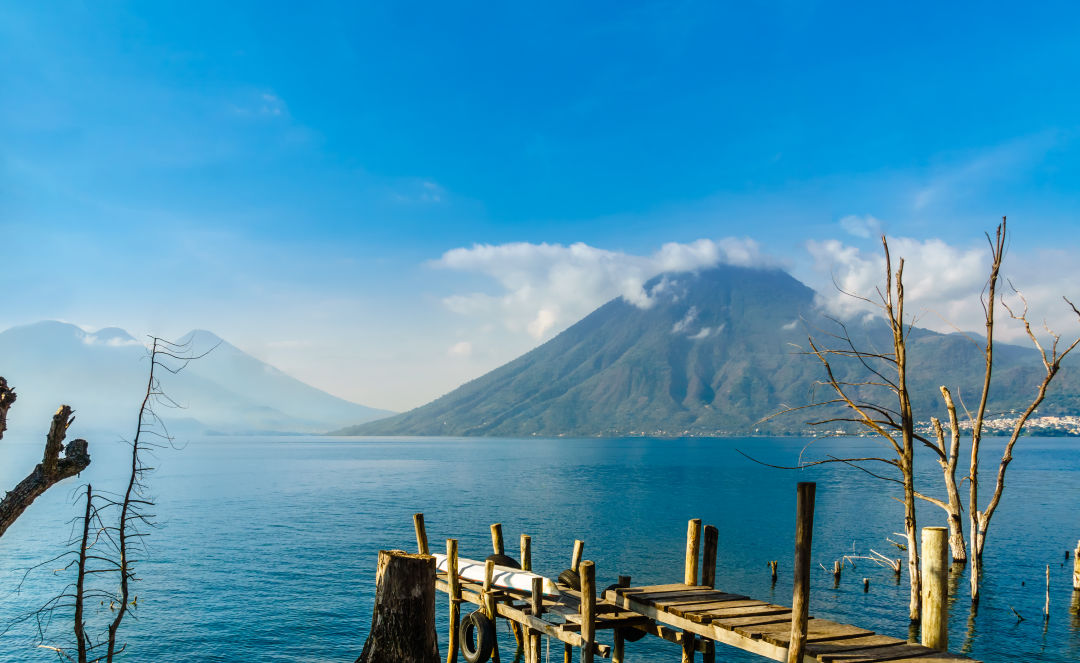
The tranquil Lake Atitlán.
Image: streetflash/Shutterstock.com
Guatemala, the Land of Eternal Spring, as it's known, seemed like a dream. I left at age 13, and ever since, I've wanted to go back. A few months ago, at age 24, that became a reality. I was nervous. I didn't know how I would react after almost 12 years—What if I didn't like it? Is that even possible?
I've heard people who visit their motherland and are like "Yeah, I can only be there for two weeks and then I feel like I need to come back." That's not what happened in my case.
I started off my trip traveling to Antigua with one of my aunts, who lives in Toronto and was also visiting. We were traveling from my other aunt's house in Mixco, on the outskirts of Guatemala City. The drive to Antigua is about an hour from Mixco, but you better go early because once traffic hits, it might take you two hours, and you have to be careful too. The roads to Antigua have dangerous curves and steep downhill descents.
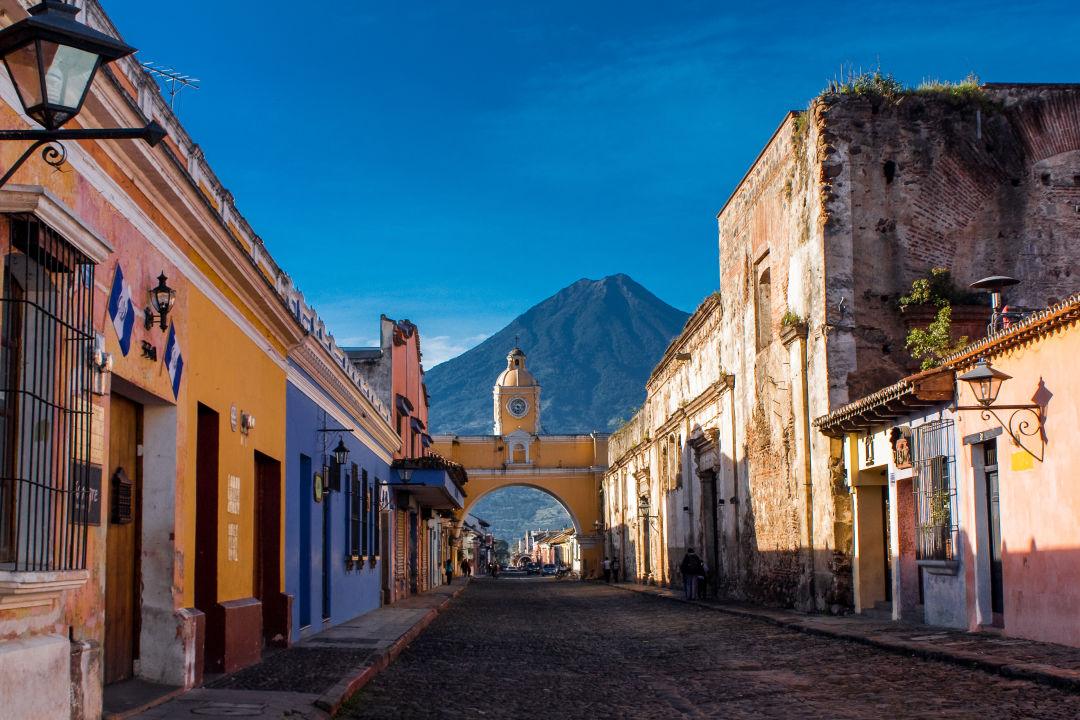
Image: elHielo/Shutterstock.com
The beautiful city greeted us with beautiful weather, clear and cool—about 60 degrees. Founded in 1542, Antigua was built as the capital of the kingdom of Guatemala. The capital of Guatemala relocated three times due to natural disasters and uprisings from the indigenous people. Today, Antigua is about an hour away from the current capital, Guatemala City, and it is still untouched by modern architecture, which preserves its Baroque style.
I’d spent the past 12 years bragging to all my friends about the beauty of Antigua, and how I used to love going to the park when I was little.
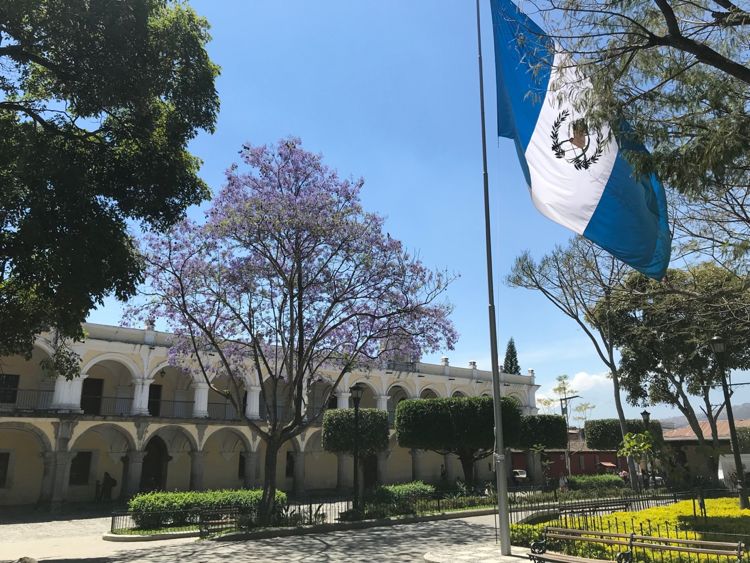
Image: Rony Ortiz Andrade
El Parque Central is located right in the center of the city. The park remained exactly as I remembered— children playing and dogs strolling by carelessly. There was the City Hall building, where my parents once bought me a foam iguana when I was about 6 or 7. There was the fountain where vendors sell goods, and where women get their hair braided by indigenous Guatemalans.
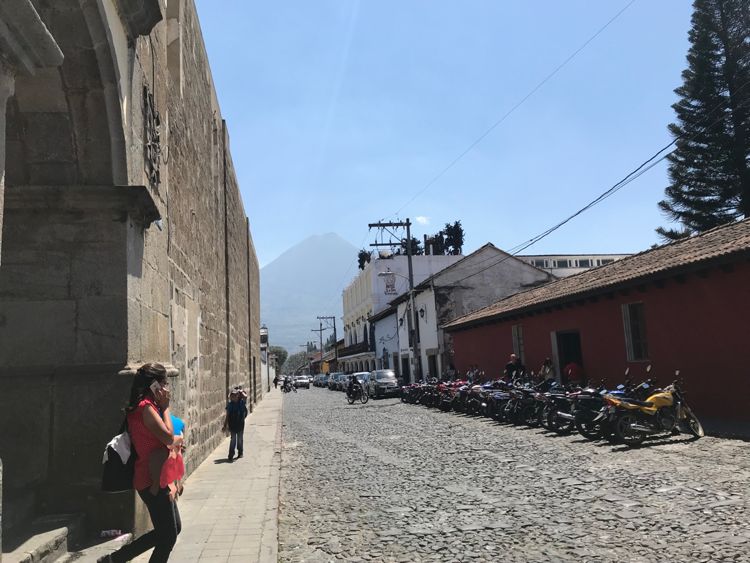
Image: Rony Ortiz Andrade
The cobblestone streets of Antigua are lined with colorful houses that give the city a colonial touch. Through some of the streets you may see El volcán de Agua, which translates to water volcano, named after a mud flood that destroyed the first colonial city, Ciudad Vieja, in 1541. After walking around for a bit my aunt and I decided to stop for a drink at Café Condesa, open in Antigua since 1993. We ordered some cimarronas, which are sparkling water with lime and salt—a very common drink in Guatemala.
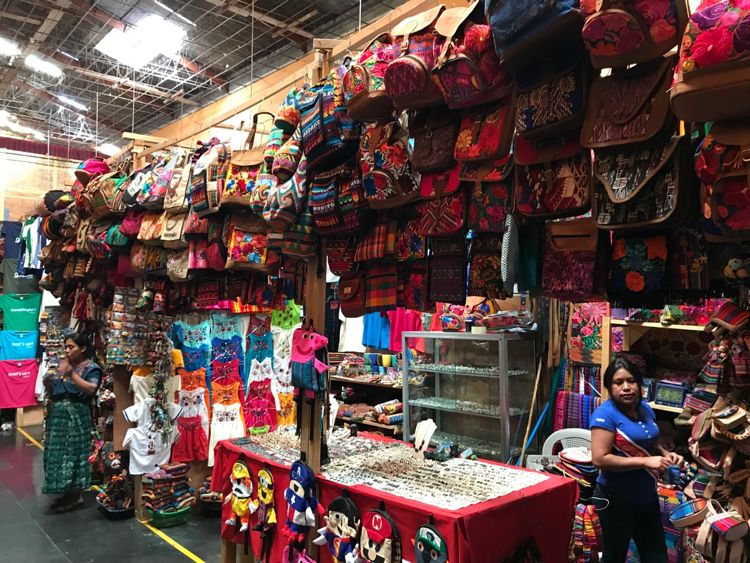
Image: Rony Ortiz Andrade
From there, we walked to the market, el mercado de artesanías, where you can bargain with the merchants to get good deals on the goodies you want. Fabrics, pottery and other crafts from this market are often imported from other parts of the country. The fabrics are very colorful in what seems a direct reflection of the country itself. Guatemala is a country full of diversity with 25 different ethnicities and four different cultures: the Maya, Garifuna, Xinca and Ladina.
You want to be careful as people will try to sell you everything they can. Jade is very common, as are colorful textiles and crafts. After some digging and exploring I finally decided to purchase a hammock— best decision of my life!
After the market, you can enjoy crepes at Luna de Miel, which is walking distance from the market. The place has a bohemian vibe, with lights on the rooftop and an interesting mural with Yoda, Che Guevara, Marylin Monroe, Diego Maradona and Einstein sitting at the restaurant. Apparently these are the best sweet and savory crepes in Antigua because the place is always full.
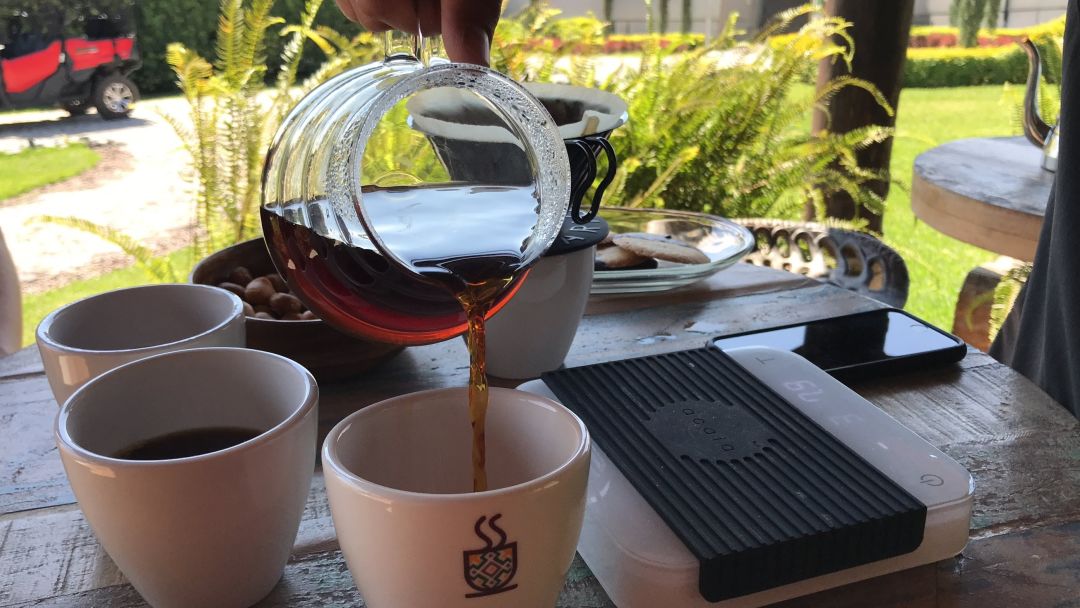
A tasting at Finca el Tempixque.
Image: Rony Ortiz Andrade
The volcanoes in Antigua make the soil very fertile for vegetation, so the area is one of the best places to grow coffee in the world. At coffee farm Finca el Tempixque, I found the best coffee I've ever had in my entire life—the taste was that of an earthy dark chocolate, brewed and roasted straight from the farm.
Finca el Tempixque is a huge contributor to coffees around the world. The coffee takes about three to four years to grow, and then blooms into a cherry, or a cereza, which holds the coffee bean inside. The cherry is squished and fermented and the coffee bean goes through a fermentation process. The cherries that once held the coffee beans inside are later used as compost for the soil. Once the coffee has been processed, it’s put in a burlap bag and exported.
From the farm, you can see both the Agua and the Acatenango volcanos. Although we weren't able to hike either volcano, we had some other adventures in store.
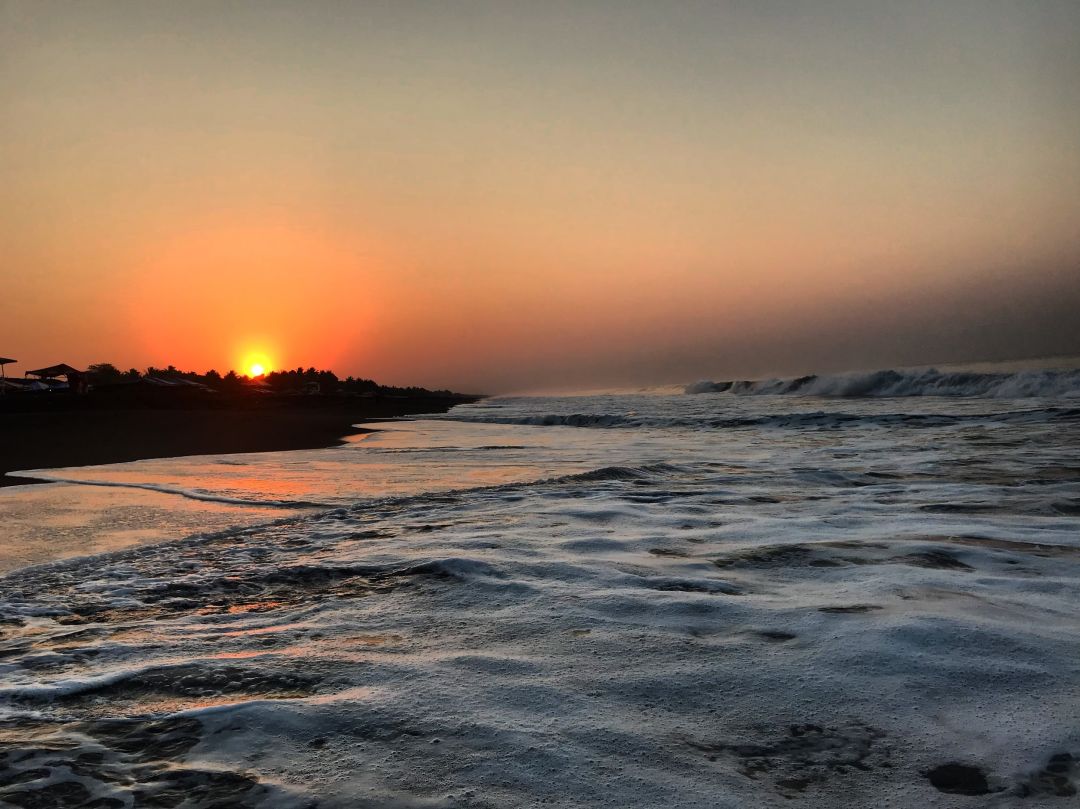
The majestic Pacific Ocean in Monterrico.
Image: Rony Ortiz Andrade
At Monterrico, a black sand beach that attracts tourists despite its heavy crashing waves, the current is not something to mess with. And you better be careful with your feet as the black sand gets pretty hot. As a little kid going to Monterrico, I always overheard stories of people who drowned in those waters and that petrified me, but as soon as I got there, I found myself down at the shoreline, just to remember old times, the waves crashing on top of each other, the breeze on my face.
The Burí Hotel, right in the heart of Monterrico, is walking distance from the town and beach and it's amazing. The rooms have a bunk bed and a separate bed, which can accommodate three people. It’s pretty cheap too, about $40 per person, including a free breakfast. The shrimp ceviche is popular among locals and is a must. Soy sauce gives it a unique taste and if you put it on some crackers, or galletas saladas, it tastes like heaven.
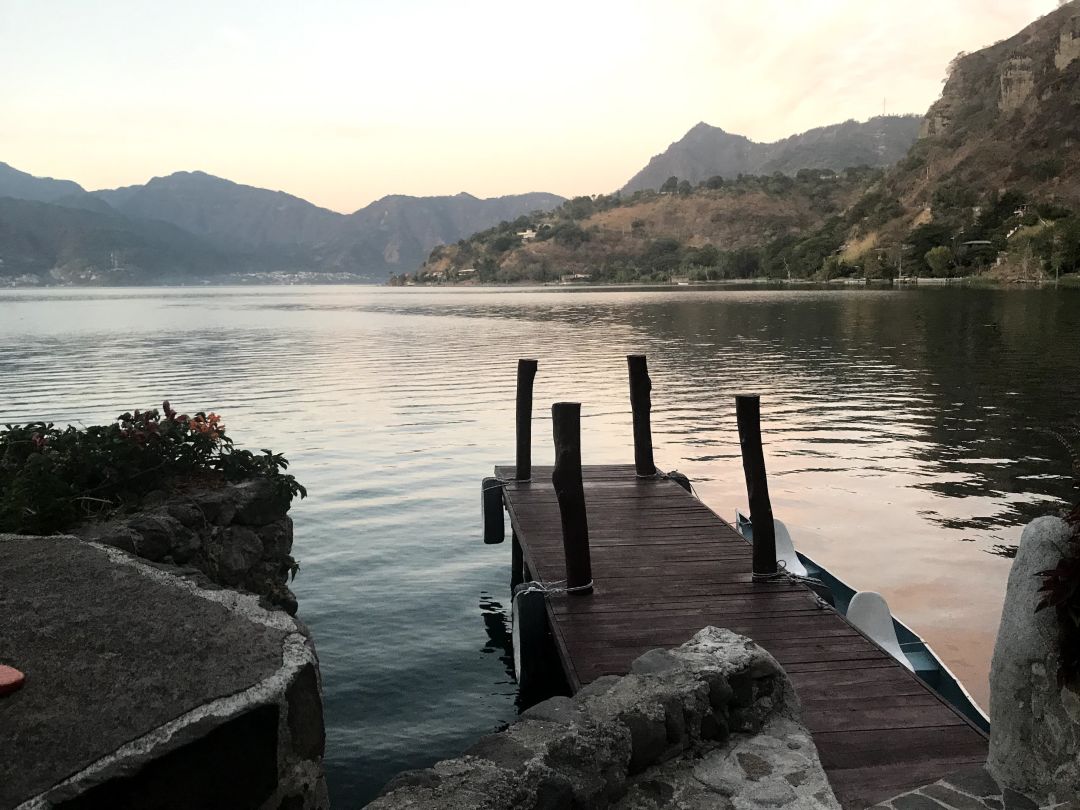
Lake Atitlan delights.
Image: Rony Ortiz Andrade
About a three-hour drive from Monterrico, there's Lake Atitlán, which reaches a maximum depth of nearly 340 meters. The blue water lake is one of the most visited places around the world. Aldous Huxley, the author of A Brave New World, described it as the most beautiful lake in the world. The water is cold and refreshing, and the lake is surrounded by three volcanoes and 12 little towns, each named for one of the apostles.
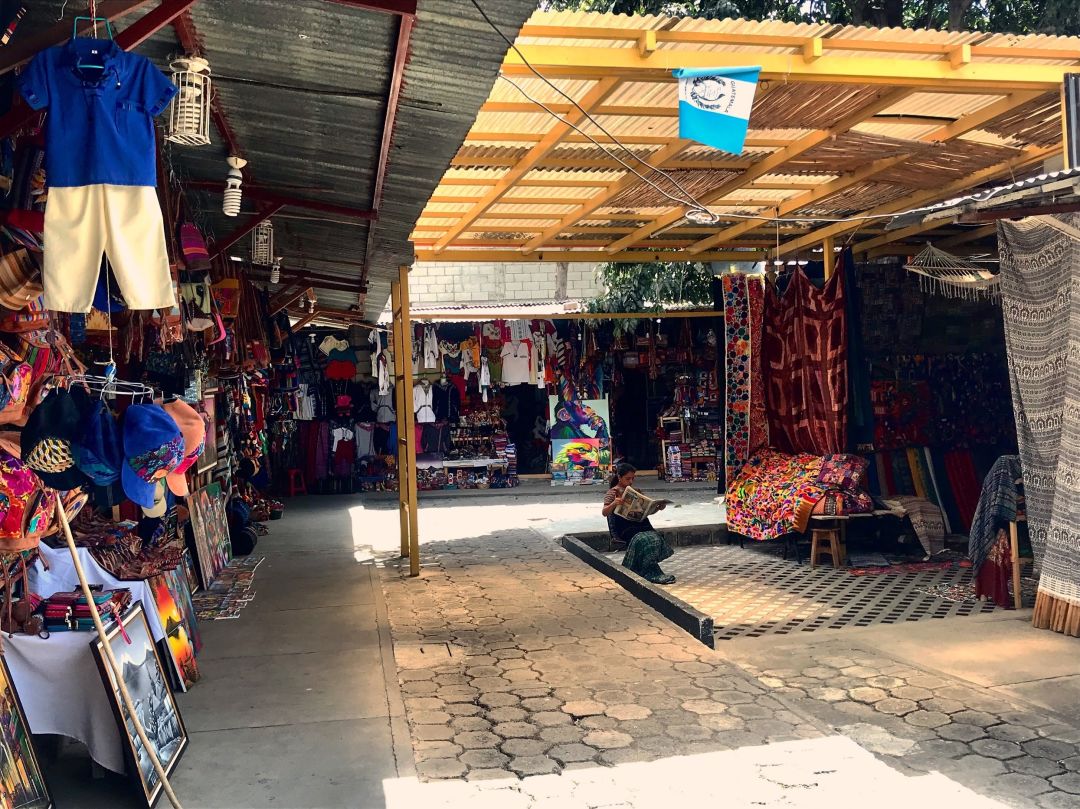
The best way to access the lake is through Panajachel. In Panajachel, you’ll find more markets and coffee spots, as well as hippies, tuk-tuks (which are like little taxis) and a lot of music, especially on La calle Santander, the most famous street in Panajachel. From Panajachel, we took a relaxing $3 public boat ride to San Marcos, where we arrived at the Jinava Hotel, which has its own exclusive pier.
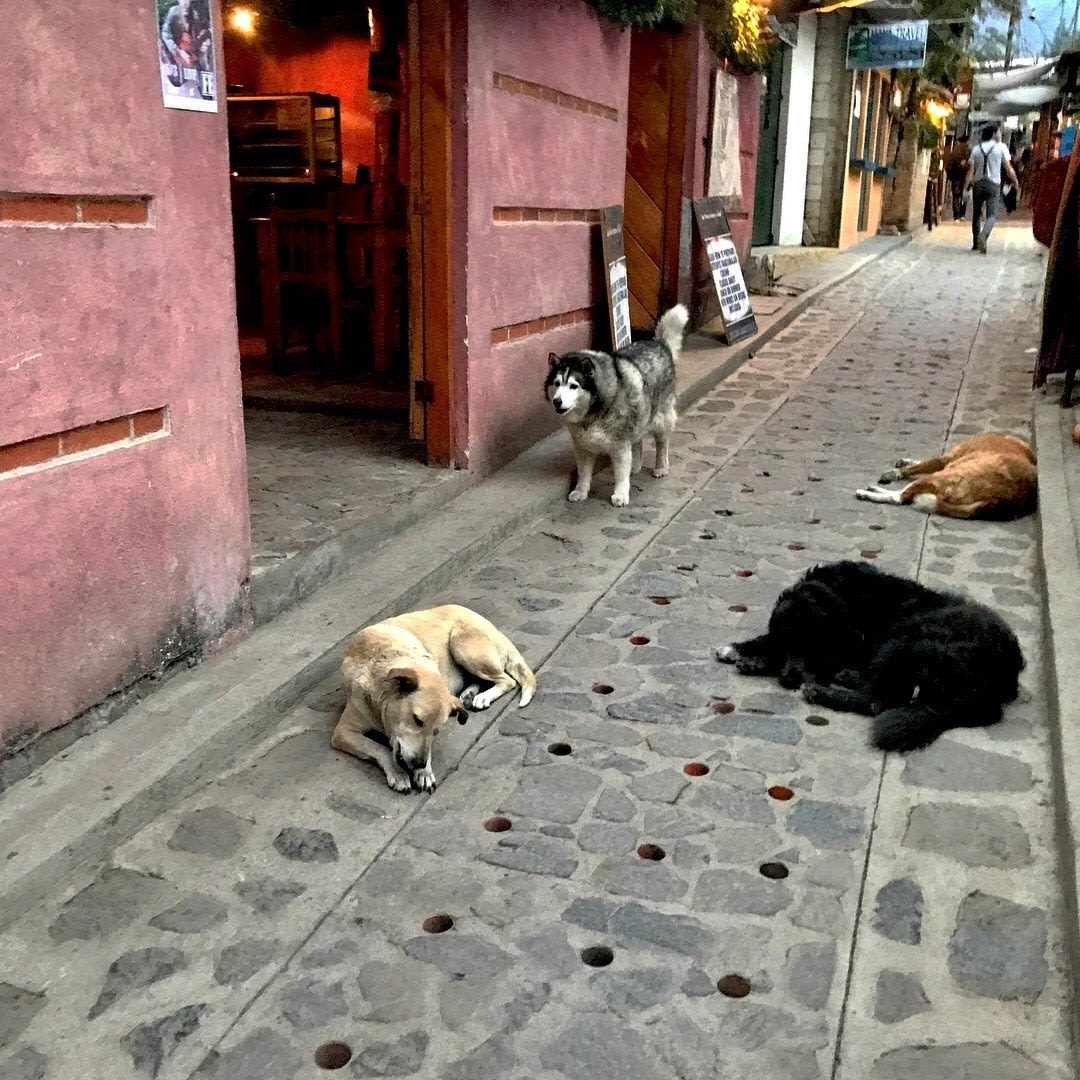
Isle of dogs.
Image: Rony Ortiz Andrade
In the little town of San Marcos, there are narrow cobblestone streets surrounded by wall murals and stray dogs, markets, hostels and even yoga spots. There are a ton of hippies, mostly Americans and Germans, but they do help local school children learn English and do other community service.
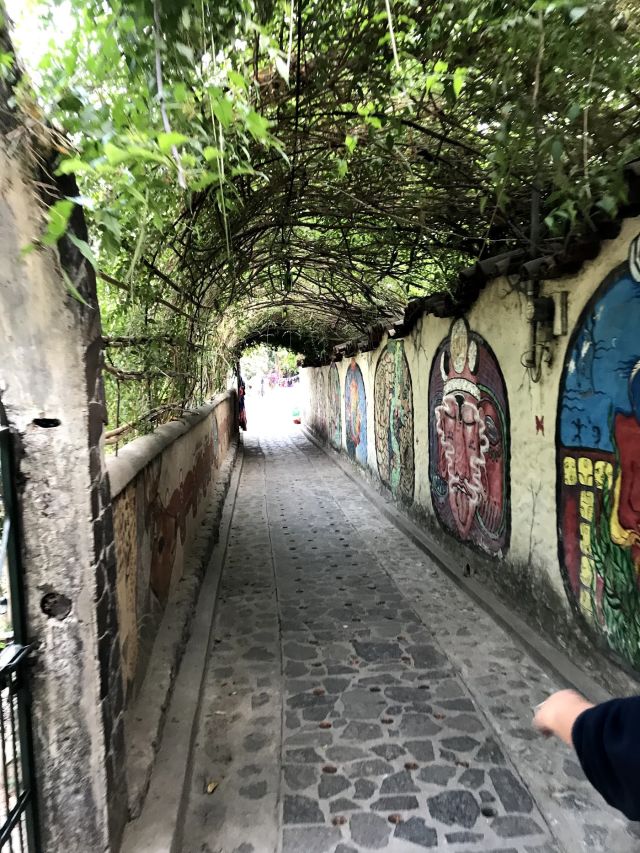
Street art in San Marcos.
Image: Rony Ortiz Andrade
After walking around and grabbing a burger at Fé, a restaurant inside the Hostel San Marcos, we decided to go back to the hotel for some coffee. There was a French couple next to us trying to access the wi-fi just like us. We decided to make some conversation and I told them, "Je sais un pue de français."
I was proud that I finally got to use some of those three years of French I took in high school, but they decided to keep the conversation going in Spanish. (He was from France; she was from Montreal. They were both trying to finish their dissertations.)
Across the lake, we could see the lights from another town, the night serene and quiet. For a moment it seemed as if time had stopped, and we could sit there and star gaze forever.
I did eventually make it back to the airport, crying as I left the hills, volcanoes and lakes, but this time knowing I’d be back much sooner than another 12 years time.




